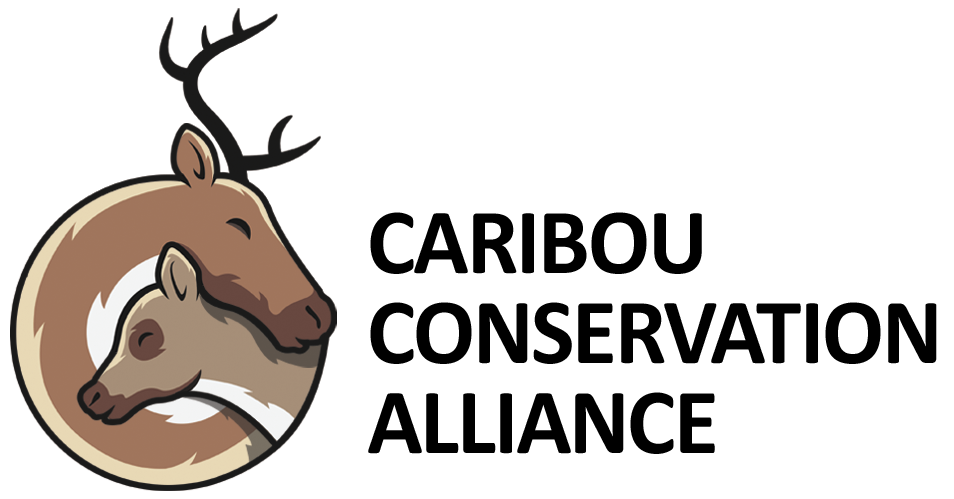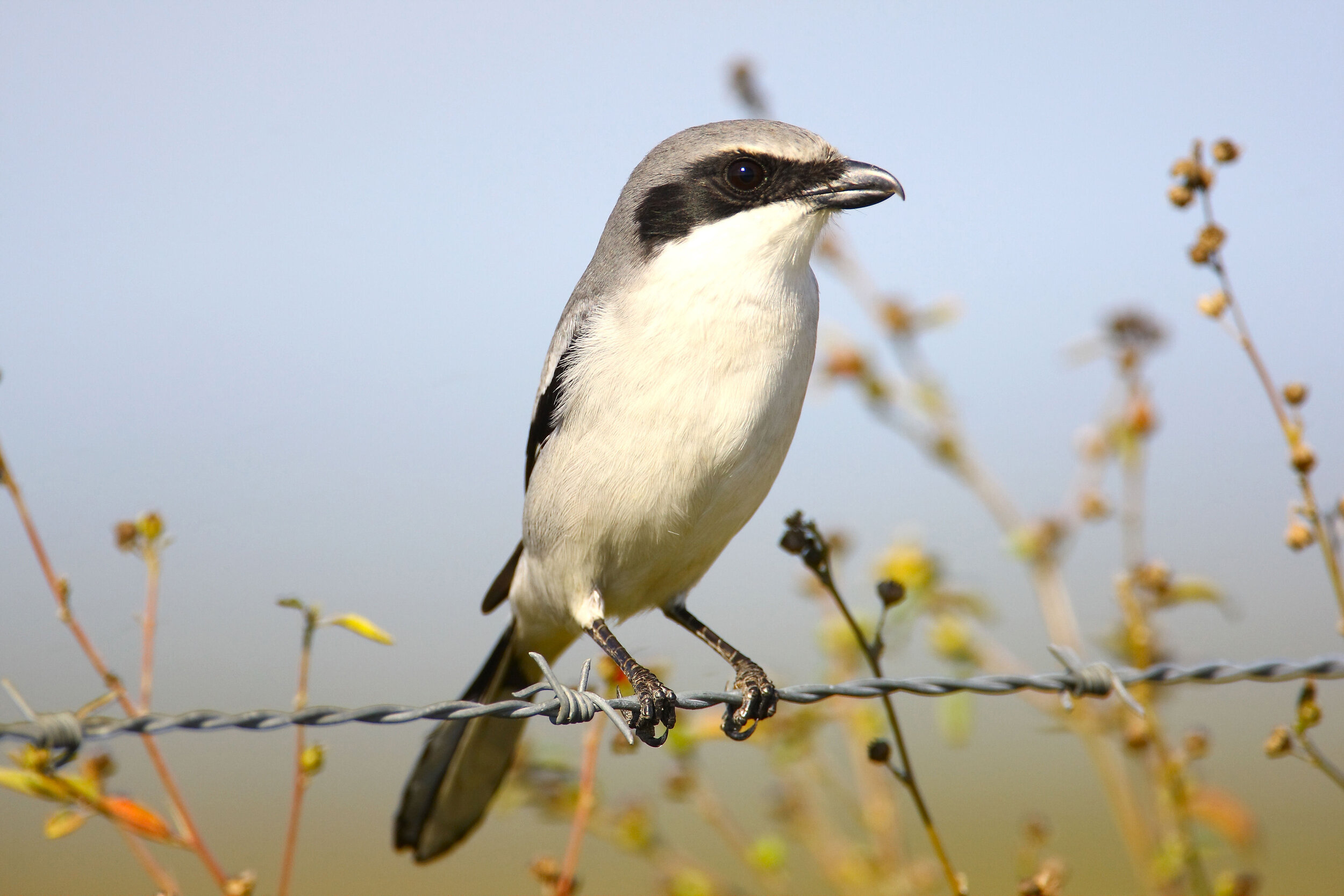
The Recovery Story of the Loggerhead Shrike
BRINGING THE BUTCHER BIRD BACK TO THE GRASSLANDS OF EASTERN CANADA
The loggerhead shrike (Lanius ludovicianus) is a North American songbird found in grassland habitats across the United States and parts of Canada. They prefer open shortgrass country with scattered trees and shrubbery and can be found in pastures, alvars, prairies, agricultural fields and desert scrublands. Loggerhead Shrikes are carnivorous, eating insects, small rodents, amphibians, reptiles and other birds. Though still fairly numerous in parts of the southern United States, loggerhead shrike populations have fallen sharply over the past century. The loggerhead shrike, unique in its predatory and impaling behaviours, is a flagship species for grassland birds and is of high conservation concern.
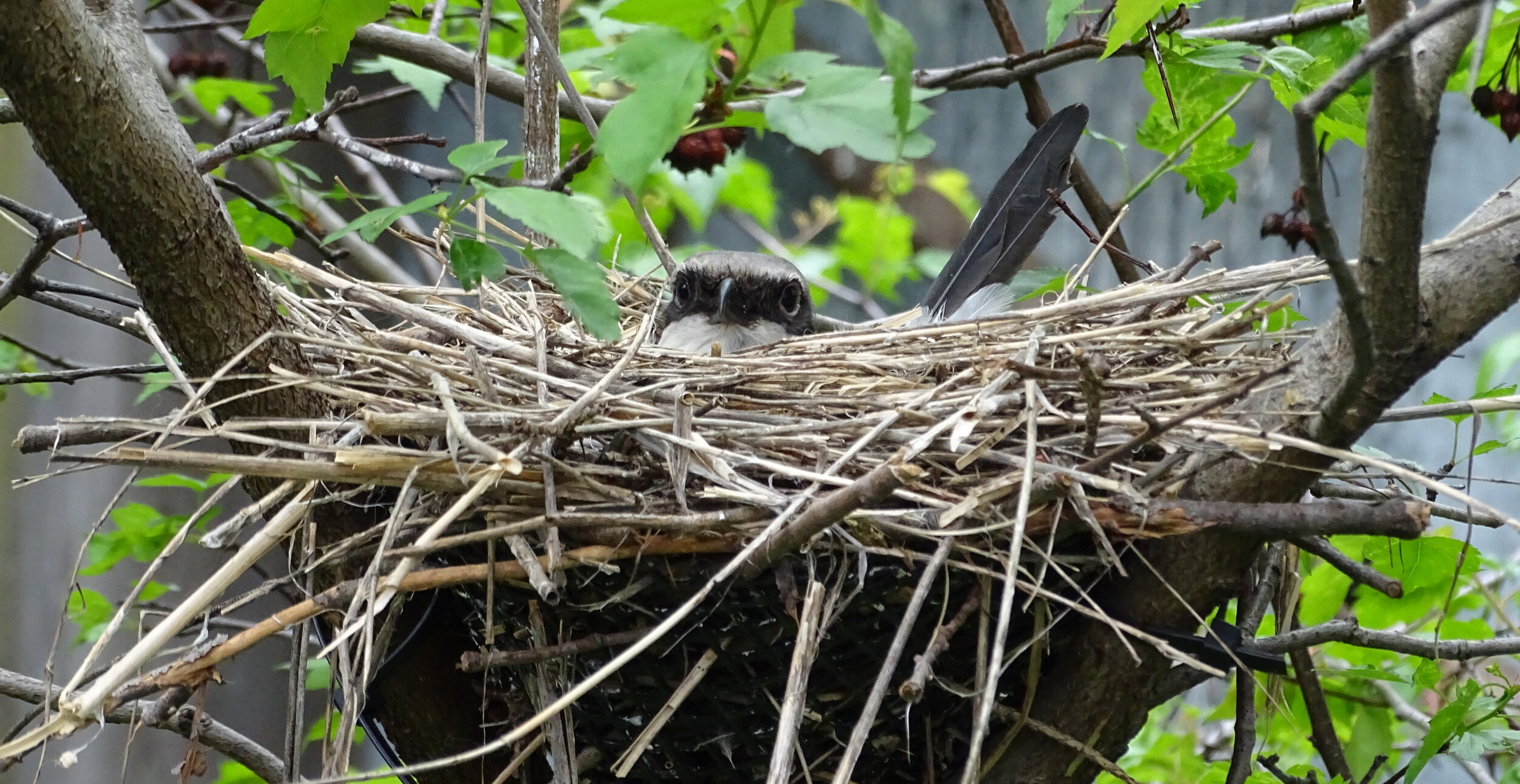
A female loggerhead shrike incubates her eggs at a conservation breeding centre. (© K. Kerr)

Field biologists approach a release enclosure in Napanee, Ontario. (© V. Luk/Evermaven)

Recovery Program Lead Biologist Hazel Wheeler examines a conservation-reared juvenile before release. (© V. Luk/Evermaven)

Recovery Program Lead Biologist Hazel Wheeler releases a wild loggerhead shrike after banding. (© N. Wajmer)
The decline of the loggerhead shrike
The species’ decline is largely attributed to habitat loss and fragmentation due to urban development, mining and pastureland conversion. Other threats include vehicular collisions and ingestion of pesticide-laced prey from treated agricultural fields.
The northeastern populations are among those that have suffered especially drastic declines. The species is now largely extirpated from northeastern North America, with the exception of a very small population in Ontario, Canada, where recovery actions are focused.
The Ontario population is classified as the subspecies Lanius ludovicianus migrans (“Eastern loggerhead shrike”) and is one of the only migratory subspecies of loggerhead shrike on the continent. Breeding numbers in the province have ranged from 20 to 35 pairs over the past decade, while the total estimated population sits at less than 100 individuals.
Though the species is globally classified as “Apparently Secure” by the International Union for Conservation of Nature (IUCN), the Eastern loggerhead shrike is listed federally in Canada as “Endangered” under the Species at Risk Act. In 1991, as a response to the rapidly declining population, the Committee on the Status of Wildlife in Canada (COSEWIC) listed the Eastern loggerhead shrike as “Endangered”, to be protected by provincial species at risk legislation in Ontario, Manitoba and Québec.
Conservation efforts
A Canadian Loggerhead Shrike Recovery Team was formed in 1992 and, in 2003, Wildlife Preservation Canada (WPC) was invited to lead the Recovery Team’s multi-partner recovery effort for the Eastern loggerhead shrike. The cornerstones of WPC’s Eastern loggerhead shrike recovery efforts include population monitoring, habitat stewardship, and conservation breeding and release.
Population monitoring
Wild shrike numbers are closely tracked through habitat surveys, nest monitoring and colour-banding, which provides insights into migratory return rates, population size, movements between core areas and the success of the conservation breeding and release program.
Although little is known about shrike migration and wintering behaviour, it appears that the major causes of decline occur outside of Canada. For this reason, the Eastern Loggerhead Shrike Recovery Team collaborates with U.S. conservation partners and uses the latest tracking technologies to learn where shrikes spend the winter and what migration routes they take. Identifying and eventually mitigating the threats that challenge shrikes during migration and overwintering is essential to the recovery of the species.
Habitat stewardship
Most of the shortgrass habitat that shrikes need is found on private land. For many years, WPC has worked with landowners to protect and enhance shrike habitat on their property, ensuring that shrikes have suitable nesting sites and hunting grounds.
Conservation breeding and release
After a particularly precipitous drop in the wild Eastern loggerhead shrike population in the 1990s, the Eastern Loggerhead Shrike Recovery Team made the decision to initiate a conservation breeding program. The goals of the program were:
Establish a genetic bank;
Reinforce wild populations; and,
Develop and refine conservation breeding and release techniques.
The first conservation breeding occurred in 1998 and, in 2001, the program expanded to include an experimental field breeding and release program, with 3 pairs being placed in field breeding enclosures and 10 young released into the wild. The field breeding program expanded considerably after that. Breeding now occurs at several partner conservation breeding centres, and approximately 100 young are produced and released annually.
The conservation breeding program was reviewed both internally and externally, with favourable results from both reviews. External reviewers suggested that the program would ultimately provide a model for future recovery programs for other shrike populations in North America and for at-risk migratory passerines.
Since 2003, the conservation breeding program has released over 1,300 young birds in Ontario. Up to 40% of shrikes spotted annually in the wild have been birds released from the conservation breeding program. The majority of these birds paired successfully with wild mates and contribute a significant number of young to the wild population.
Results from population viability analyses have shown that the conservation breeding and release program has had a stabilizing effect on the wild population in both core breeding areas in Ontario. So far, the conservation breeding program is doing its job: keeping Eastern loggerhead shrikes in Canada while the Eastern Loggerhead Shrike Recovery Team works to discover the mortality causes during the migration cycle. Once those causes are addressed, conservation breeding will be an essential tool in helping the wild population grow.
Lessons learned
Having multiple projects is beneficial
The success of the Eastern loggerhead shrike conservation breeding program is achieved through collaboration with several breeding centres.
Conservation-reared shrikes can adapt to living in the wild
Young born in a conservation centre that are parent-reared and provided with live prey show a full range of natural behaviours and a high survival rate post-release.
Conservation center design impacts welfare
The species’ natural behaviour must be taken into account when designing conservation centres. Increasing the height of the breeding enclosures to a height that better accommodates the shrike’s foraging behaviour resulted in reduced stress and increased breeding success.
Involvement of stakeholders is crucial
Partnership development with stakeholders is key to the long-term success of conservation and release programs.
Conservation breeding can support the recovery of migratory bird species
Successful recruitment of captive-reared young into the wild population over successive years shows conservation breeding is a viable conservation tool for migratory birds.
Fun facts
“Loggerhead” refers to the unusually large size of this bird’s head in relation to its body.
The loggerhead shrike is a songbird that hunts like birds of prey.
Shrikes lack the strong talons and powerful feet of birds of prey, but have a strong hooked beak to kill their prey with a quick bite to the neck.
Anything that is left uneaten will often be impaled on barbed wire and thorny shrubs.
Loggerhead shrikes can kill and carry animals up to 1.3 times their weight.
Their carnivorous tendencies earned them the nickname of the “butcher bird”.
The impaling behaviour allows shrikes to store food for nestlings, to attract mates and to mark home range boundaries.
Loggerhead shrike fledglings practice their impaling skill with natural items such as dried leaves and flowers.
Loggerhead shrikes impale noxious prey such as monarch butterflies and wait several days before eating them to allow the poisons to break down.

Red-shanked grasshopper (© Rachel Kolokoff Hopper)
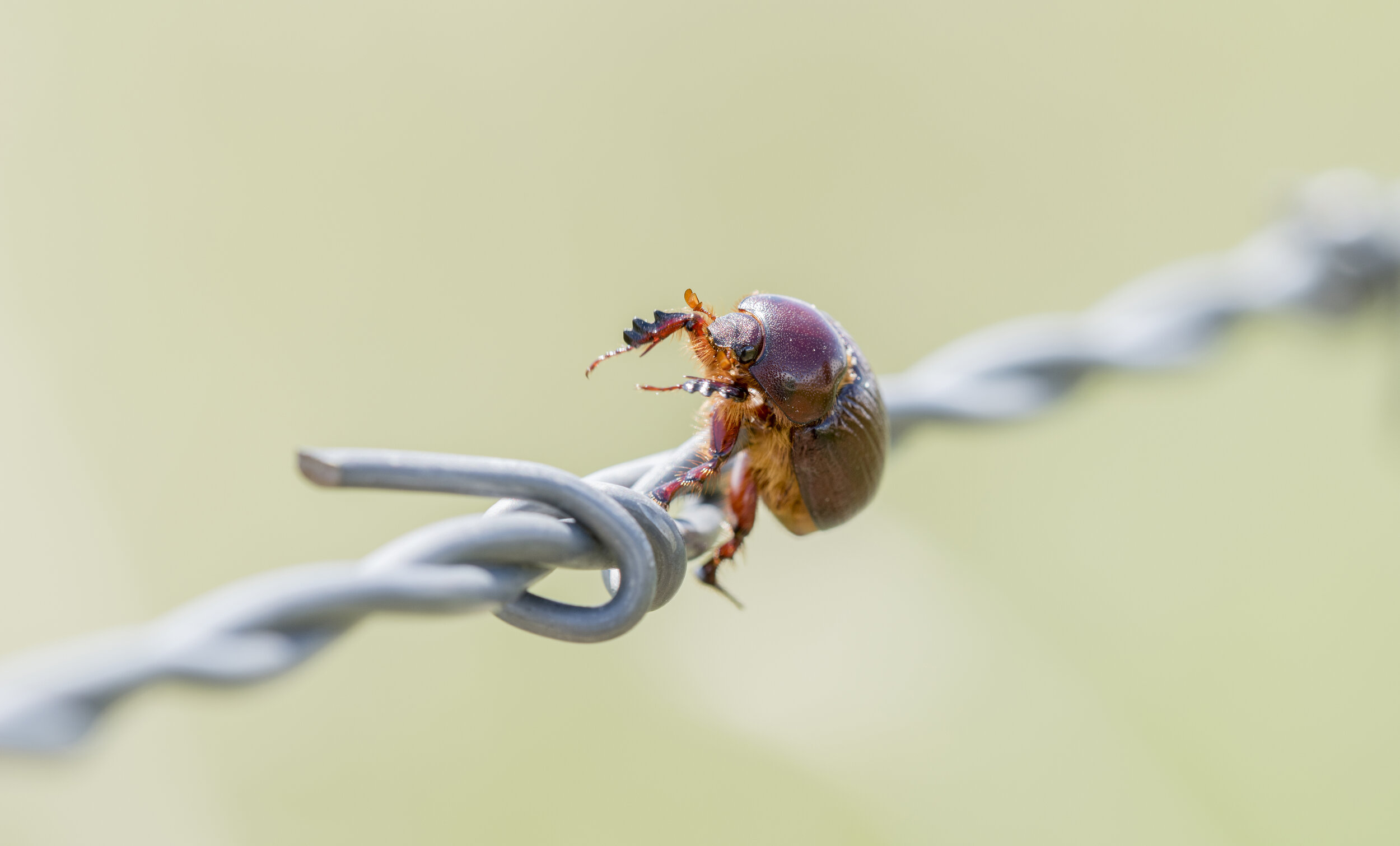
Carrot beetle (© Rachel Kolokoff Hopper)
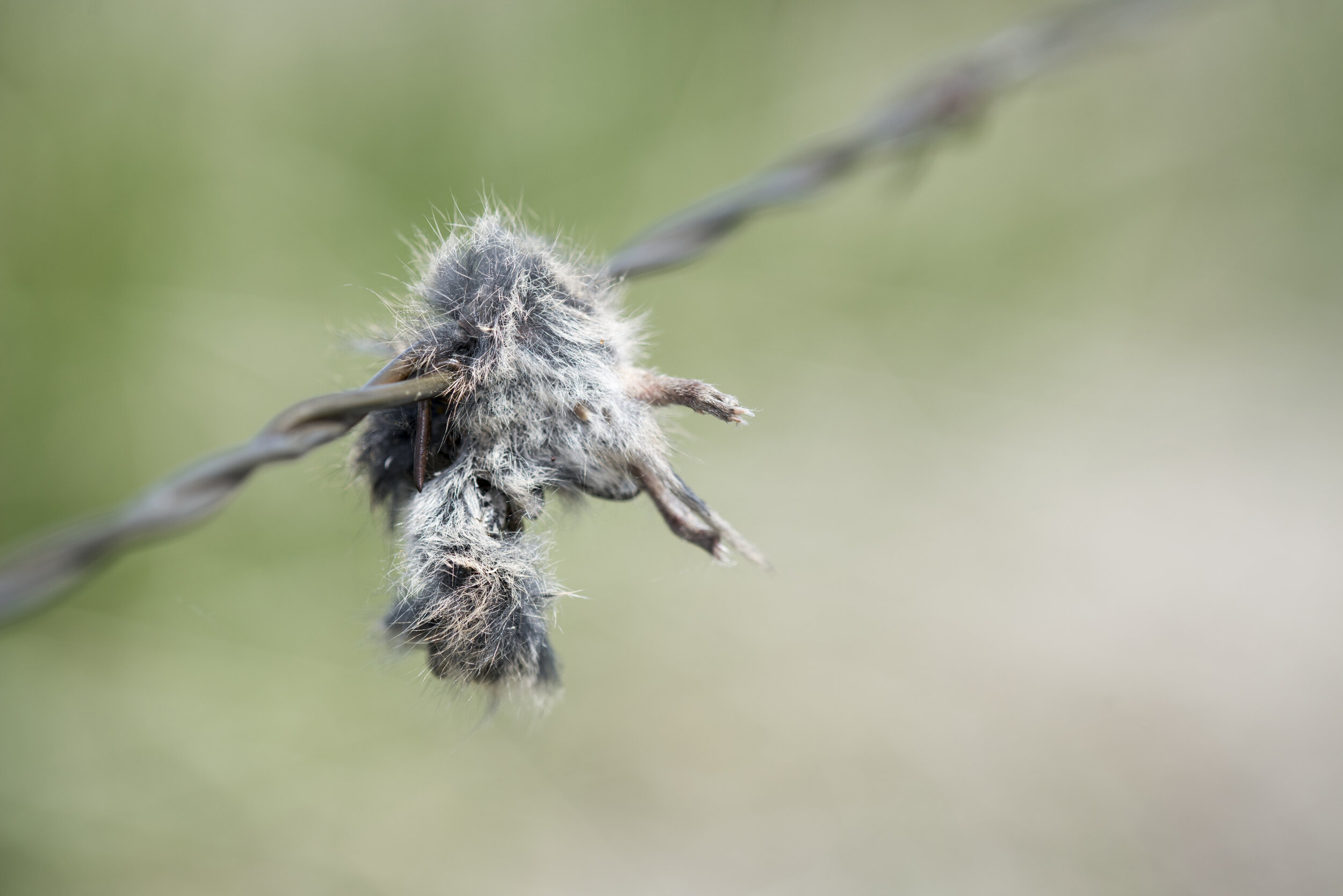
Rodent (© Rachel Kolokoff Hopper)
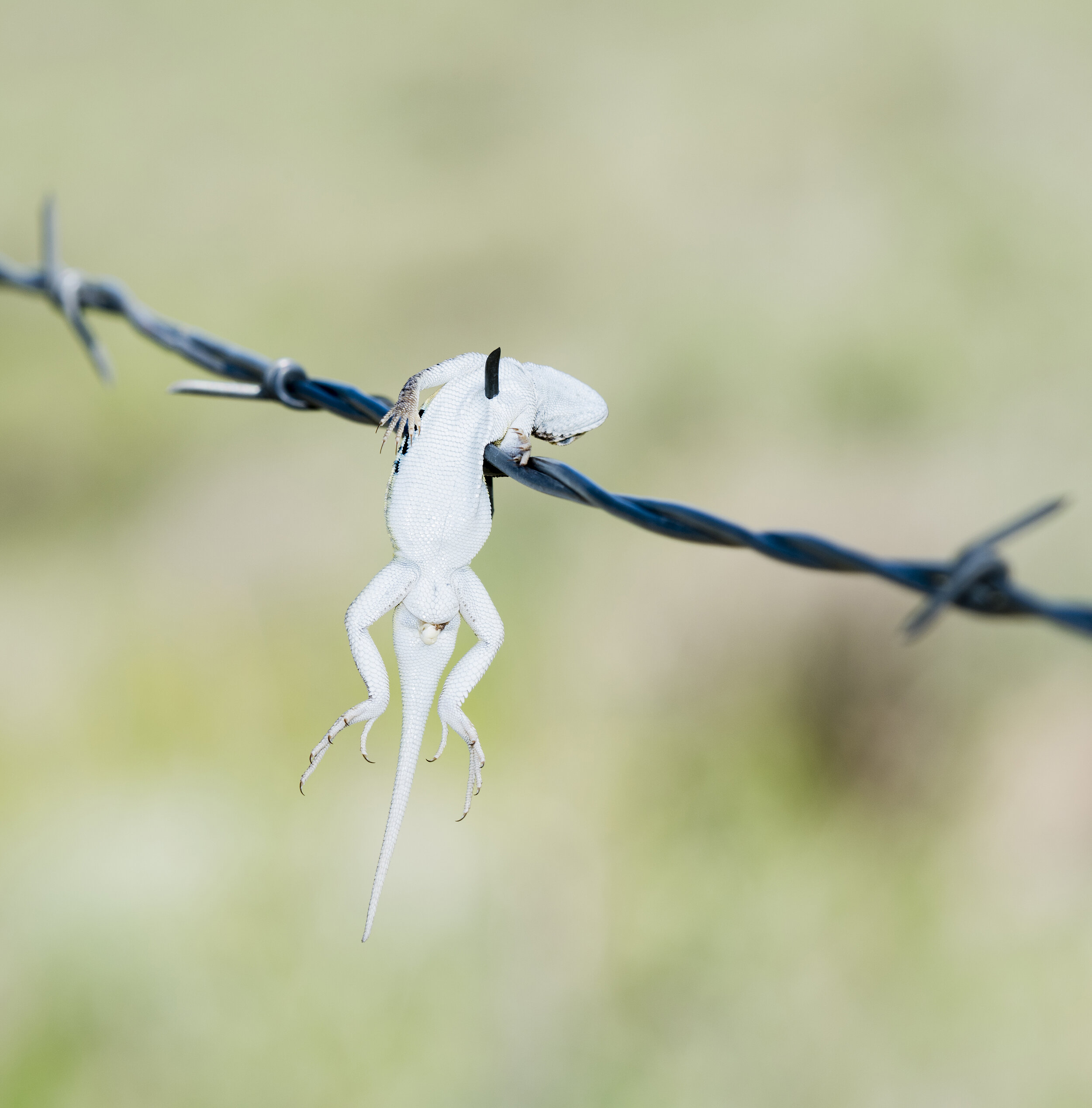
Lesser earless lizard (© Rachel Kolokoff Hopper)
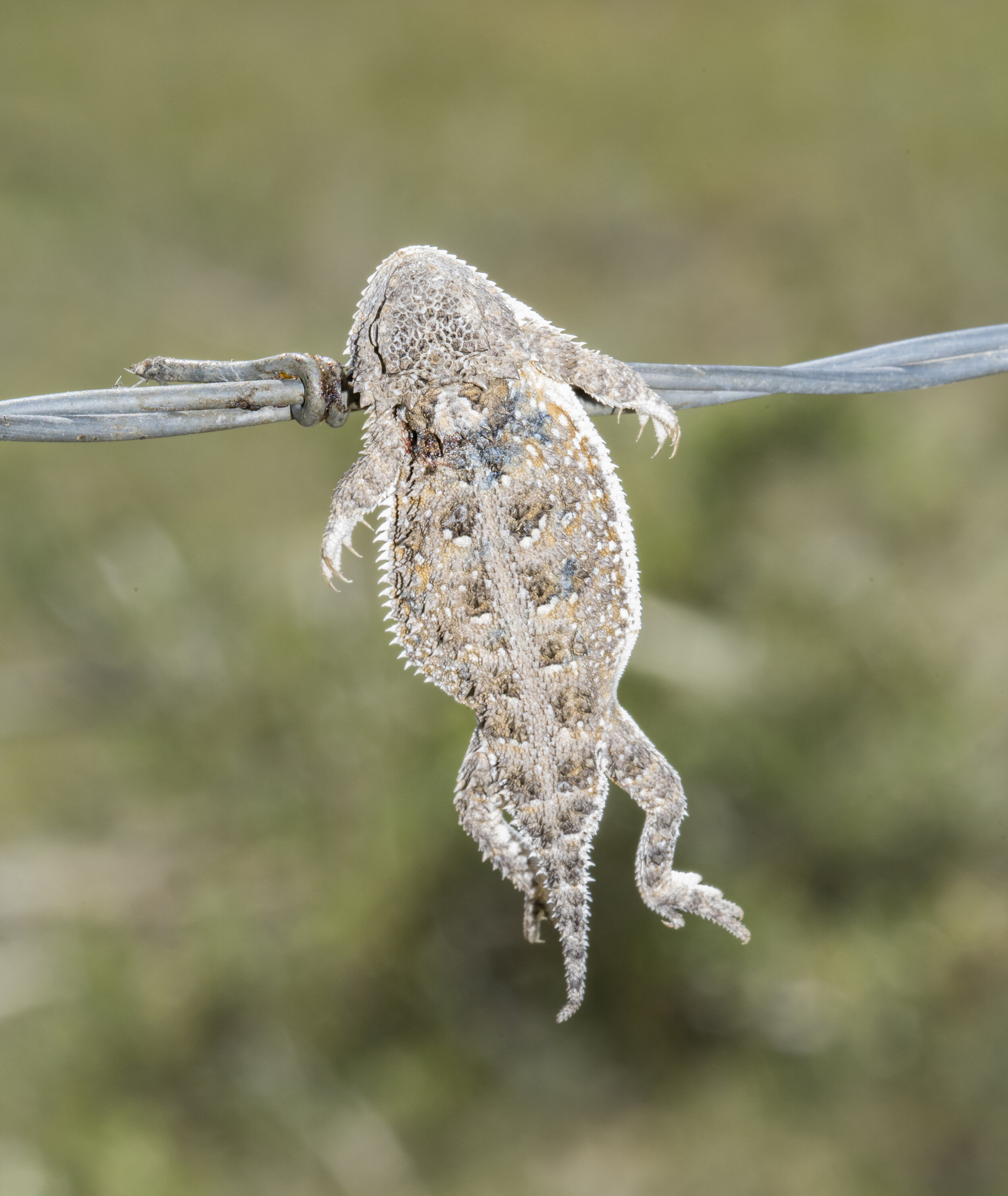
Hernandez's short-horned lizard (© Rachel Kolokoff Hopper)
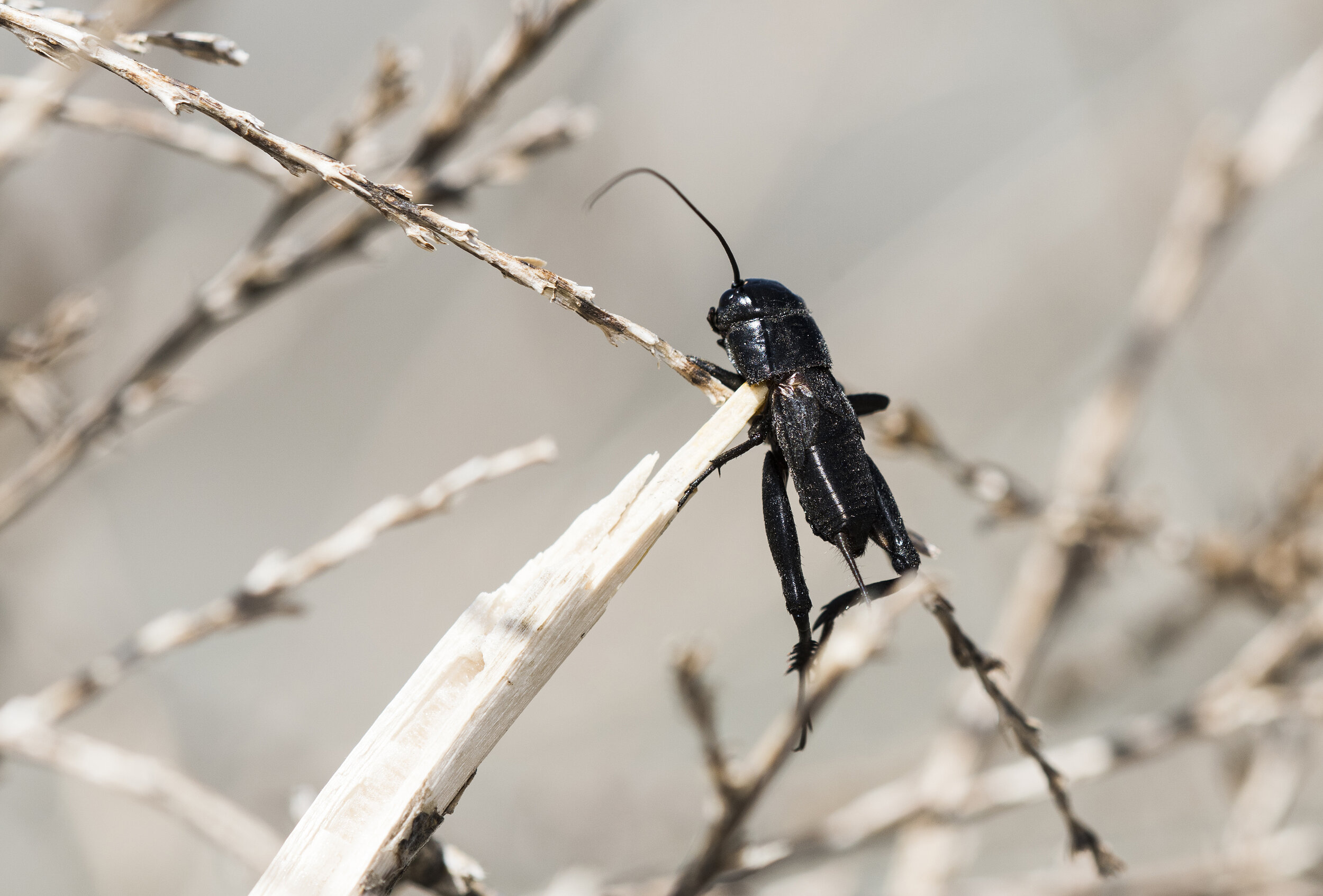
Fall field cricket (© Rachel Kolokoff Hopper)

Probable grasshopper sparrow (© Rachel Kolokoff Hopper)
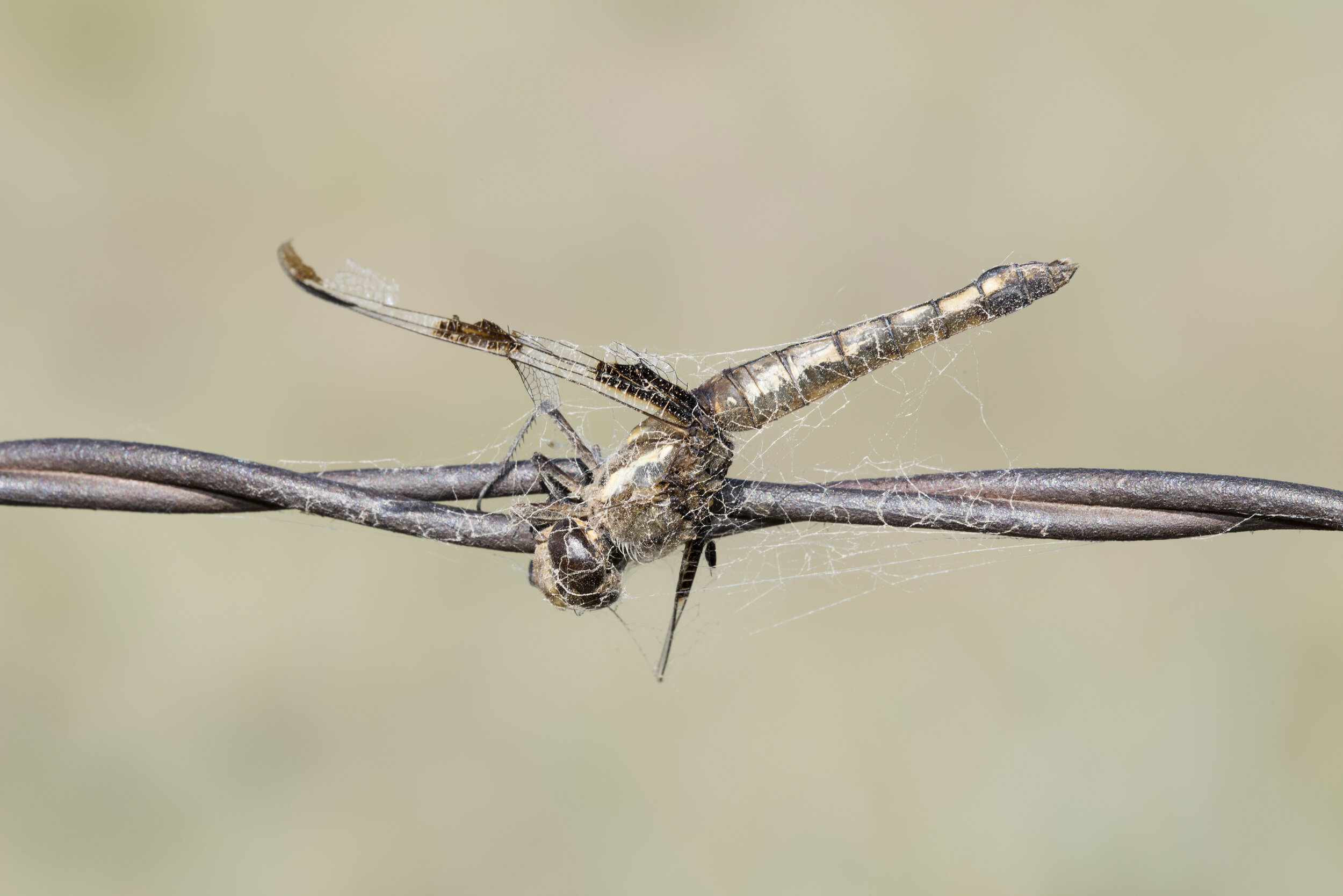
Twelve spotted skimmer (© Rachel Kolokoff Hopper)
Recommended Readings
How shrikes grow (Wildlife Preservation Canada, 2020)
Barb, the adorable loggerhead shrike species ambassador (Wildlife Preservation Canada, 2020)
This stunning photo project showcases the loggerhead shrike’s gory deeds (Audubon, 2020)
This tiny songbird rolls its head to break its victim’s neck (The Atlantic, 2018)
Eastern loggerhead shrike: Saving species from extinction across Canada by providing direct, hands-on care (Wildlife Preservation Canada, 2016)
